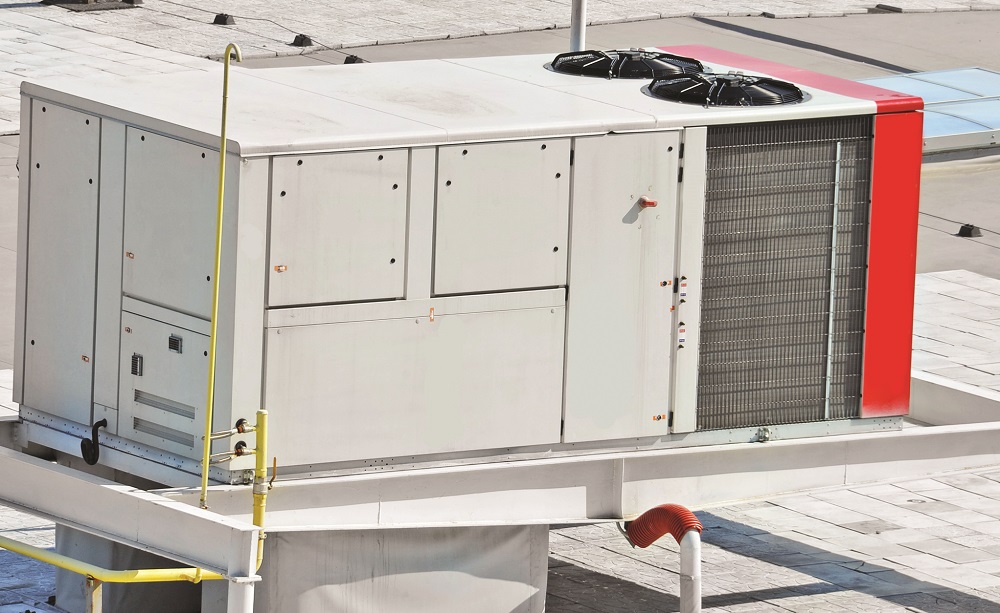Eurovent has recently announced launching a three-level hygienic certification option for the Eurovent Certified Performance programme under the existing Certita Certification for air-handling units, with an avowed objective of improving air quality. Quentin Liebens delineates on the subject.
– Quentin Liebens

Quentin Liebens
We now live in an ethos where the market has increasingly become demanding in terms of energy performances, environmental challenges and quality. In response to this, Eurovent Certita Certification has decided to develop a new three-level hygienic option for the Eurovent Certified Performance (ECP) programme for air-handling units (AHUs).
The aim of this option is to guarantee the hygienic aspect of an AHU by checking the quality of the material used, the components selected and the level of maintenance of the casing and the components.
AHU – the starting point
The quality of air within a building, whether it is a commercial structure, a school, an office or a hospital, is a key element in its design, and AHUs constitute the beginning of air movement within these built spaces. It is, therefore, essential to ensure good air quality from this very point. Hygienic air is already vital for a few types of buildings, such as hospitals, food processing areas, pharmaceutical environments and white rooms. However, the concept of hygienic air can be extended to other types of buildings.
 Though several environmental labels advocate good air quality for commercial buildings and work towards achieving it, it is unusual to see specific requirements on AHUs for these kinds of labels. This is rather a shame, when we know that an AHU is the first step in the process of the air treatment in a building. This lacuna is due to the attitude we have towards the term “hygienic”, which is, for most of us, typically reserved for hospitals and the pharmaceutical industry. This is a direct consequence of the existing hygienic standards, which don’t fit into the paradigm for commercial buildings, as they have been written for hospitals. However, some manufacturers agree that several AHUs manufactured for commercial buildings answer to hygienic criteria but are not recognised as such, mostly because they are not perceived to be necessary.
Though several environmental labels advocate good air quality for commercial buildings and work towards achieving it, it is unusual to see specific requirements on AHUs for these kinds of labels. This is rather a shame, when we know that an AHU is the first step in the process of the air treatment in a building. This lacuna is due to the attitude we have towards the term “hygienic”, which is, for most of us, typically reserved for hospitals and the pharmaceutical industry. This is a direct consequence of the existing hygienic standards, which don’t fit into the paradigm for commercial buildings, as they have been written for hospitals. However, some manufacturers agree that several AHUs manufactured for commercial buildings answer to hygienic criteria but are not recognised as such, mostly because they are not perceived to be necessary.
The accessibility of all components within an AHU, as well as the maintenance and cleaning of the casing and the components must be ensured
Why the certification?
It’s within this context that Eurovent Certita Certification has decided to launch the hygienic option for its existing AHU programme, to bring within its ambit a wide range of buildings.
The AHU hygienic option has been developed with the help of a compliance committee consisting of AHU manufacturers who are already participants of the Eurovent Certification AHU programme. The proposed programme has been checked and validated by a group of experts known as the Certification Programmes and Policy Commission, comprising four colleges: End-user representatives, manufacturers, technical and scientific experts and, finally, national authorities.
How it works
The certification programme proposes a hygienic rating from level 1 to level 3, represented by stars. The higher the rating, the more hygienic the AHU unit is deemed to be. The objective of the programme is to declare an AHU suitable for different applications that is easy to identify, thanks to a simple classification system (see Figure 1).

Figure 1
This certification programme provides reliable guidelines to end-users willing to get the benefits of good air quality, irrespective of the type of building, and entails requirements related to manufacturing, shipment, materials, maintenance, casing performance and the arrangement of components and their performances.
As a first step, manufacturing an AHU correctly is vital to ensure the quality of the product at the very beginning of the process. Materials used in the product is another key element in manufacturing a hygienic AHU, to protect it from microorganisms and corrosion. The metallic components need to be stainless and durable. The hygienic option includes requirements for filters, heating and cooling coils, heat recovery systems, fans, humidifiers, dehumidifiers and silencers to ensure that the AHU has a long lifespan. Standards are already in place to cover these factors. The hygienic programme endeavours to ensure that the quality of materials selected and used by the manufacturers are in compliance with these standards.
The hygienic option includes requirements for filters, heating and cooling coils, heat recovery systems, fans, humidifiers, dehumidifiers and silencers
Checking the quality of the product after it is manufactured guarantees smooth and clean surfaces to allow easy maintenance and cleaning of the casing.
The process of shipment can be an area where a product is prone to damage. Therefore, a proper system of protection needs to be in place when it is stored and shipped from the factory to the building site.
Installation and Operational Manual (IOM) of the products and quality management systems of the manufacturers must be written to ensure protection of the AHU after manufacturing.
The hygienic option also proposes a list of requirements to check the quality of the components selected, and subsequently guarantee the hygienic aspect of the AHU. It includes requirements for filters, heating and cooling coils, heat recovery systems, fans, humidifiers, dehumidifiers and silencers.
Easy access to components is the key to efficient maintenance of an AHU. It aids in cleaning and changing them quickly. Therefore, the accessibility of all components within an AHU, as well as the maintenance and cleaning of the casing and the components must be ensured. In this regard, the Eurovent Certified Performance programme tests and certifies the casing performance of an AHU. The hygienic option includes the minimum criteria to be achieved in order to comply with the set standards.
The final goal of the requirements is to safeguard the various hygienic facets of an AHU, along with its components, to ensure minimum performance and criteria. Fulfilling the criteria will help certify AHUs as being hygienic to meet today’s quality challenges.
CPI Industry accepts no liability for the views or opinions expressed in this column, or for the consequences of any actions taken on the basis of the information provided here.
Quentin Liebens is Project Development Manager, Eurovent Certita Certification. He can be contacted at q.liebens@eurovent-certification.com.
Copyright © 2006-2025 - CPI Industry. All rights reserved.